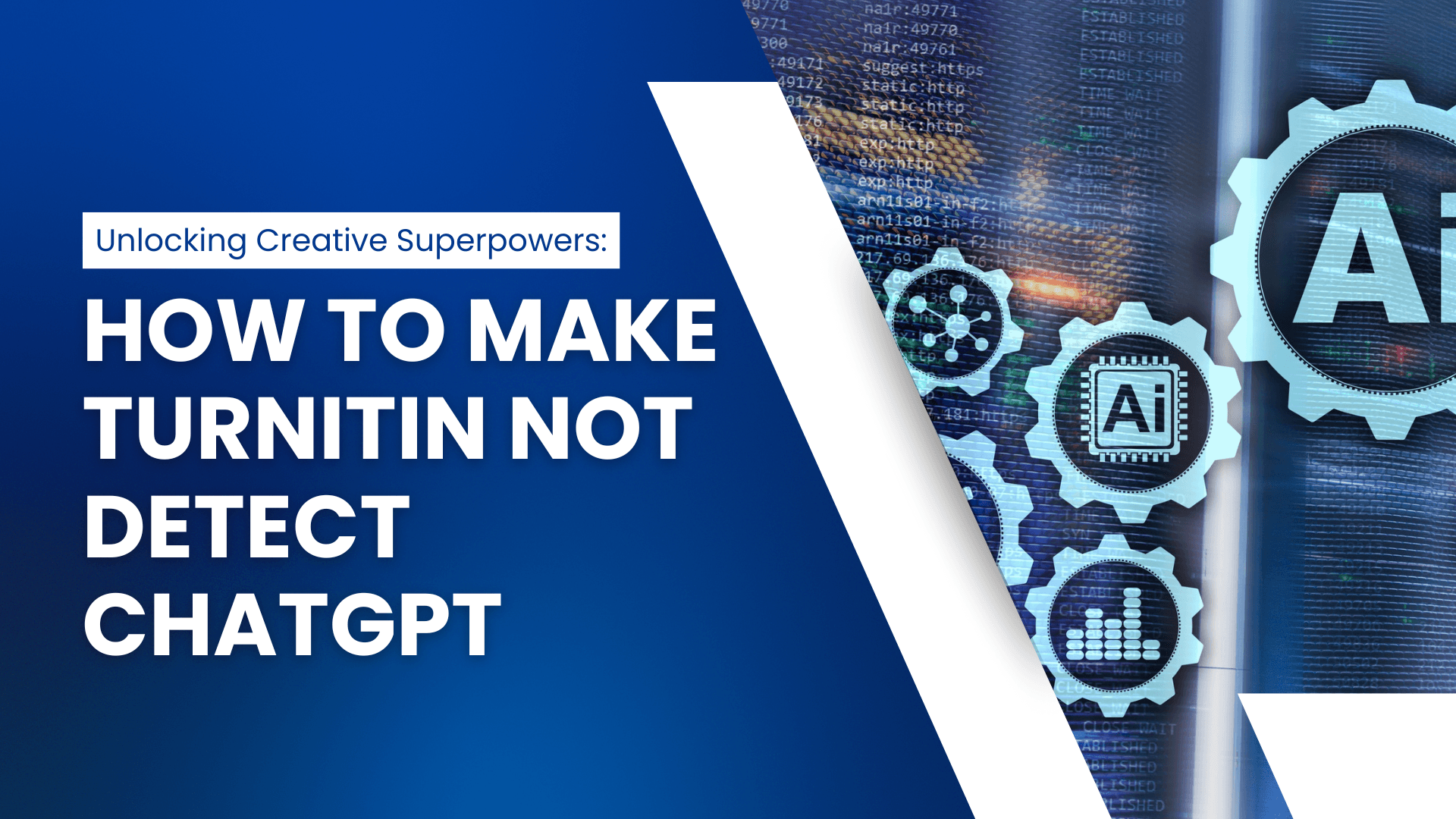AI writing is everywhere now — essays, research papers, blog drafts, emails, and even presentations begin with ChatGPT. But while AI has made writing faster and more accessible, it hasn’t solved one big problem: the writing still sounds like AI. Structured. Predictable. Emotionally flat. Perfect grammar with zero personality.
That’s exactly why so many people search for how to make Turnitin not detect ChatGPT.
Turnitin is no longer just a plagiarism checker. In 2026, it has evolved into one of the world’s strongest AI-detection engines — evaluating sentence rhythm, token predictability, vocabulary patterns, and coherence signals to determine how “human” or “machine-like” your writing is.
But here’s the truth: People aren’t trying to cheat. They simply want their writing to sound natural again. They want to use AI the way it’s meant to be used — as a drafting assistant — and then refine the output into something truly human.
That’s why AI humanization tools have exploded in popularity. These tools don’t help anyone plagiarize. They help people write with flow, emotion, and authenticity — things Turnitin associates with genuine human work.
In this guide, we’ve tested the best AI humanizers of 2026 to help you create writing that flows naturally, reflects real human tone, and passes Turnitin’s AI analysis without triggering flags. This is not a cheat sheet — it’s a clarity and readability guide built for people who want their work to feel like their own voice.
Top 5 Tools to Make Turnitin not Detect ChatGPT
1. Humanize AI — Smoothest Natural Flow
2. AISEO — Best Overall Humanizer
3. QuillBot Humanizer — Best for Everyday Writing
4. StealthGPT — Fastest Human-Style Rewriter
5. HIX Humanizer — Best New Alternative
1. Humanize AI Text — Best for Natural Flow & Human-Like Rhythm
While AISEO is the most advanced full-suite humanizer, Humanize AI Text stands out for one thing: effortlessly natural, flowing sentences that feel like genuine human writing.
Turnitin flags writing when it looks:
• overly structured
• evenly rhythmic
• mechanically balanced
• lacking human imperfections
• emotionally flat
Humanize AI’s engine specializes in breaking these exact patterns. It doesn’t just rewrite sentences — it rebuilds them with human-like variation, subtle unpredictability, and emotional tone shifts that Turnitin associates with real authors.
Here are the features that make Humanize AI Text especially effective:

Key Humanize AI Features That Help with Turnitin Detection
1. Human Flow Reconstruction
Humanize AI automatically adds natural pacing to your writing:
• mixed sentence lengths
• conversational transitions
• human-style pauses and emphasis
• non-linear narrative flow
Turnitin’s AI detector expects humans to be slightly “inconsistent” — Humanize AI recreates that perfectly.

2. Readability Modes Built for Human Variation
Humanize AI includes advanced readability settings that change:
• vocabulary complexity
• cognitive depth
• reasoning style
• natural variation in structure
The modes most useful for Turnitin-safe writing:
• High School → simple, emotional, natural
• University → balanced tone with human nuance
• Journalist → persuasive, rhythm-heavy, human sounding
• Doctorate → deep reasoning with academic voice
Each mode injects unique human signals Turnitin relies on to determine authenticity.

3. Multi-Tone Personalization
Turnitin looks for tone mismatch — AI often writes with a uniform tone.
Humanize AI solves this by offering:
• General writing
• Academic
• Story
• Cover letter
• Essay
Real humans shift tone based on intent. AI doesn’t. Humanize AI imitates this natural tone variability, lowering Turnitin suspicion.

4. Document Upload with Format Preservation
Instead of pasting chunks into a box, Humanize AI lets you upload full:
• Word documents
• PDFs
• Long essays
It humanizes the entire document while keeping header layout, citations, and structure intact — making your final submission look like a naturally written academic file rather than a copy-paste rebuild.

5. Multilingual Humanization with Natural Tone
If you write in languages like:
• Spanish
• German
• French
• Italian
• Portuguese
• Japanese
• Korean
Humanize AI adapts human patterning unique to that culture and language. Turnitin’s multilingual AI detection is strict — this feature makes multilingual writing look authentically human.
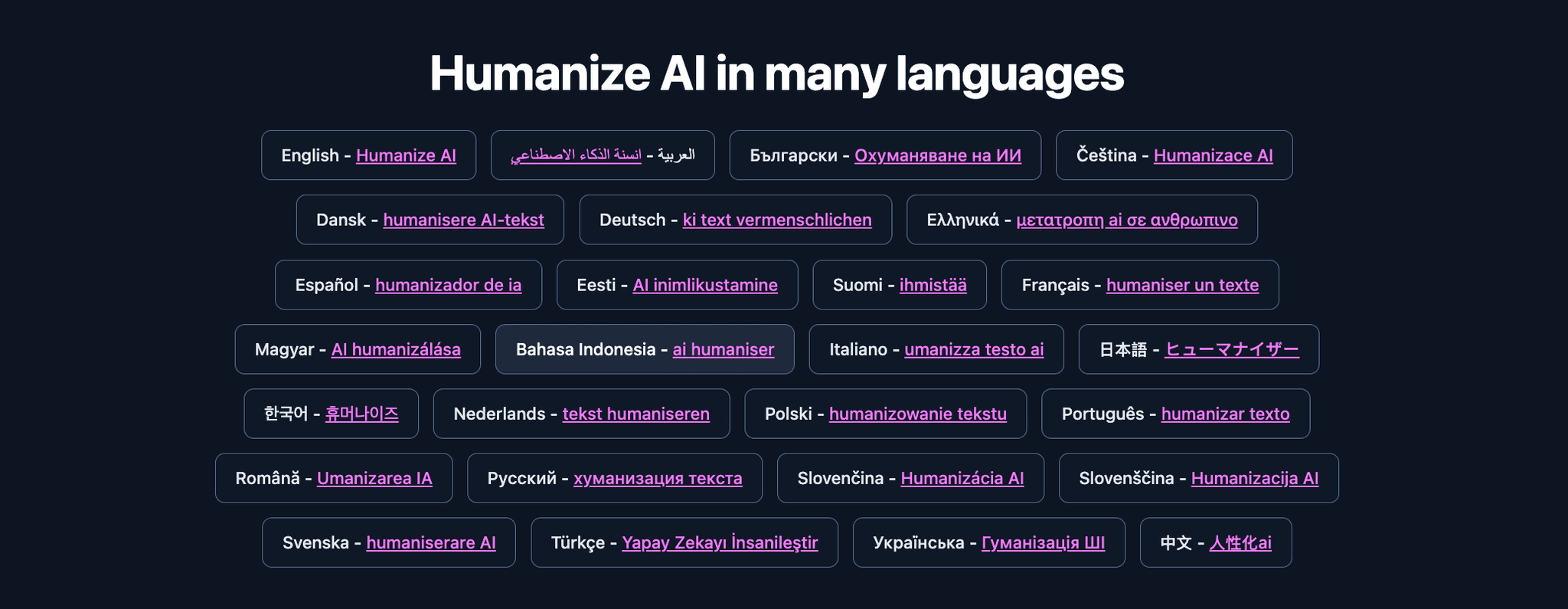
Pricing
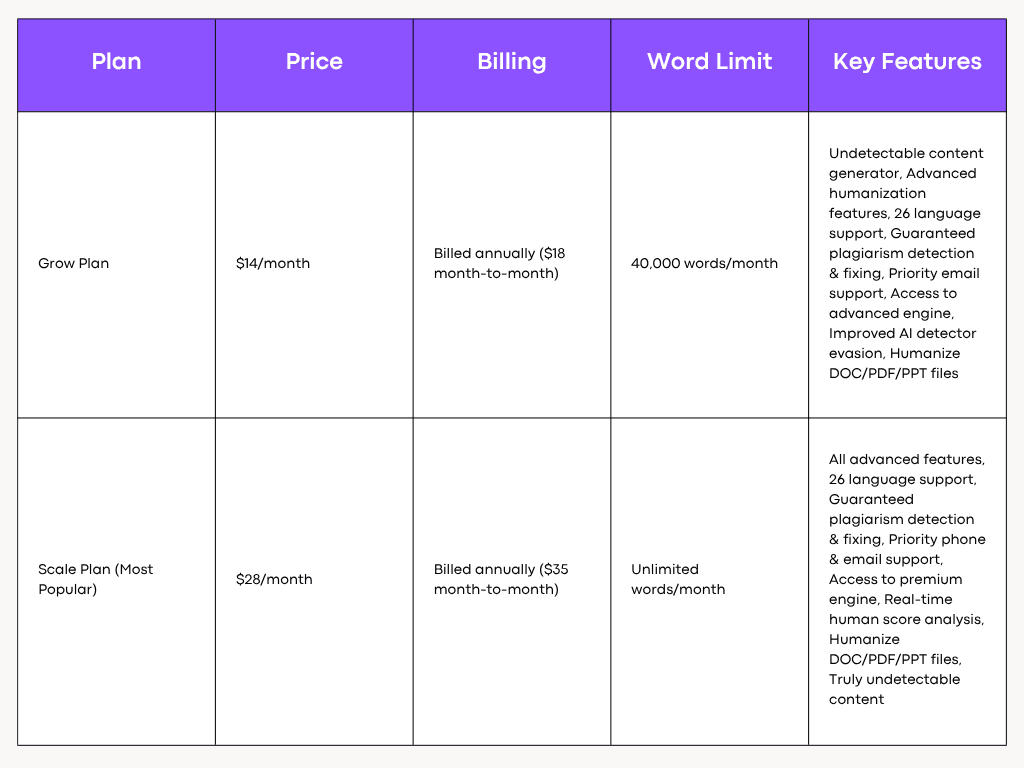

2. AISEO — Best Overall Humanizer for Making ChatGPT Writing Pass Turnitin
AISEO stands out as the strongest tool for anyone searching for how to make Turnitin not detect ChatGPT, not because it “tricks” the system, but because it rewrites AI text into genuinely human-like writing. Turnitin doesn’t flag human writing — it flags robotic patterns, predictable structures, and statistically uniform wording.
AISEO fixes those exact issues through features uniquely built for human variation, authentic tone, and natural sentence rhythm.
Below are the AISEO features that directly help Turnitin recognize your writing as human:

Key AISEO Features That Help Avoid Turnitin AI Flags
1. History Panel — Ensures Human Consistency
Turnitin often flags text when it sees sudden, unnatural changes in tone or structure. AISEO’s History feature lets you revisit every refinement you applied so your writing stays consistent across paragraphs — the way humans naturally revise and evolve a document.
Consistent tone = Lower Turnitin suspicion.

2. Fact Check — Repairs One of the Biggest AI Red Flags
One of Turnitin’s strongest detection signals is AI factual uncertainty — AI sometimes fabricates information or uses vague generalized claims.
AISEO’s Fact Check tool verifies claims, dates, details, and data inside your writing. When your text contains accurate, grounded facts, Turnitin sees it as human-researched, not machine-generated.
Factually correct text naturally passes AI scrutiny.

3. Human Score — The Most Direct Indicator of Turnitin Safety
Turnitin measures patterns, predictability, and token distribution. AISEO evaluates the same things with its Human Score Meter, showing how likely your writing appears human-written before you submit it.
If the Human Score reads “100% Human”, the writing has:
• varied sentence lengths
• non-linear narrative flow
• natural pacing
• authentic phrasing
• reduced predictability
These are the exact patterns Turnitin associates with genuine human authorship.

4. Purpose Selector — Shapes Natural Human Intent
Humans write differently depending on purpose. AI doesn’t. Turnitin detects this mismatch easily.
AISEO’s Purpose Selector rewrites your text according to real-world writing intentions, such as:
- Academic
- General writing
- Essay
- Article
- Story
- Cover letter
This gives your writing clear human intention and structure — something AI often lacks and something Turnitin relies heavily on to distinguish machine vs human.

5. Readability Levels — Eliminates AI-Like Uniformity
AI text often sits at a single readability level with perfect balance — a major Turnitin red flag.
AISEO’s Readability Level tool lets you adjust writing to:
• High School
• University
• Professional
• Creative
Each level changes vocabulary, pacing, complexity, and natural imperfection — all of which produce genuine human-like variance Turnitin expects to see in authentic writing.
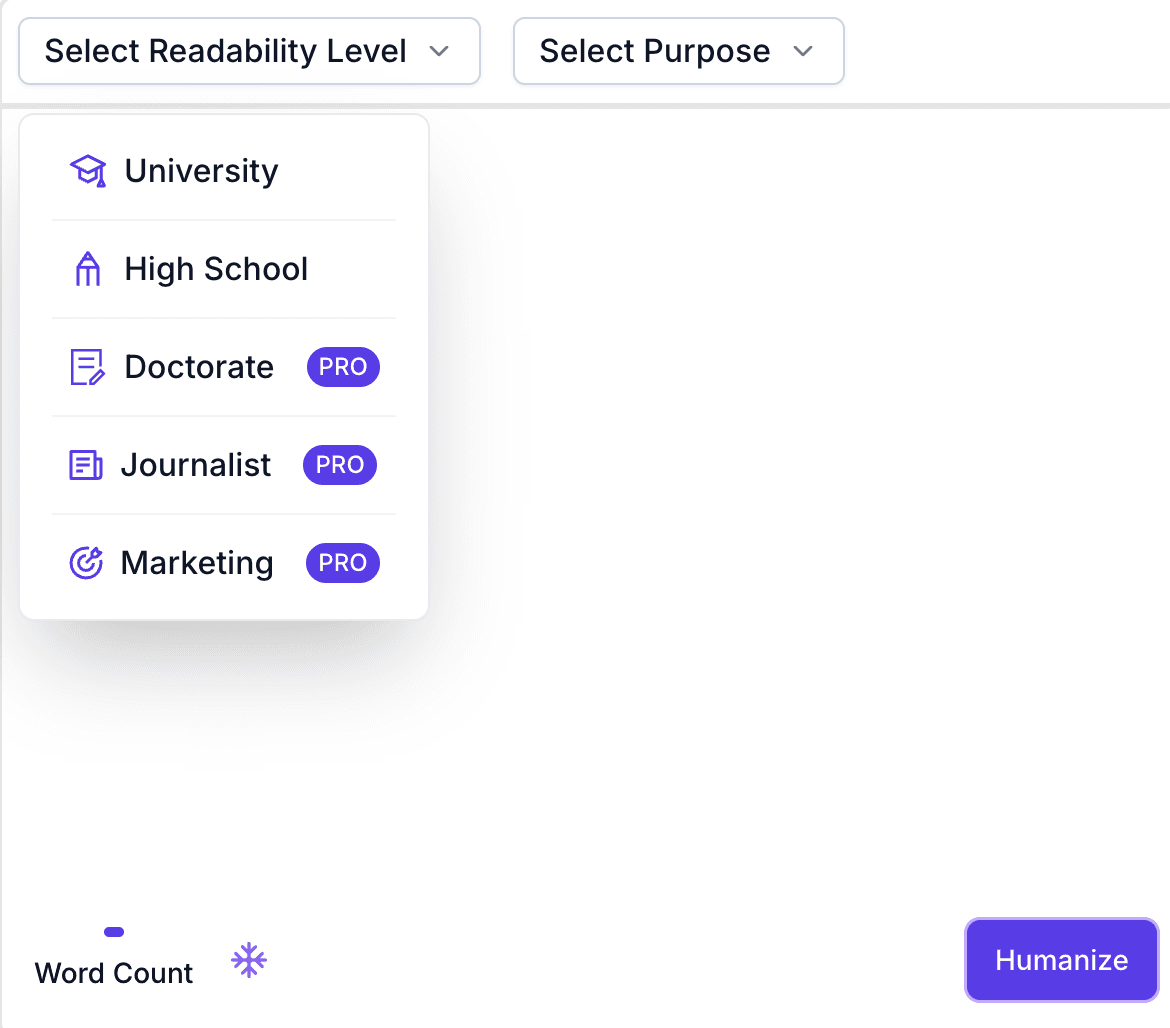
AISEO Pricing


All plans include a $1 full-access trial.
3. QuillBot — Best for Instant Human-Like Sentence Structure & Flow
QuillBot’s Humanizer is one of the simplest tools for making AI-generated text sound more human, especially for writers worried about Turnitin flagging ChatGPT text. Its strength isn’t deep semantic rewriting like AISEO, but fast, natural sentence reshaping that removes the stiff, uniform patterns Turnitin detects most easily.
What makes QuillBot special is its ability to quickly rework AI phrasing into smoother, less predictable, more human-sounding sentences—without changing the original meaning. This makes it ideal for essays, short paragraphs, and everyday writing where natural flow matters most.

Key QuillBot Features That Help Avoid Turnitin AI Flags
1. Basic Mode — Removes the Most Obvious AI Patterns
QuillBot’s Basic Humanizer softens robotic phrasing, breaks predictable structures, and gives text a subtle “edited by a person” feel. This mode works best for:
• simple sentence variety
• natural rhythm
• reducing rigid AI pacing
Great for light humanization when you just need the text to feel less machine-like.

2. Advanced Mode — Deeper Rewrites for Turnitin Safety
Premium users get access to Advanced Humanize, which goes far beyond synonym swaps. It helps with:
• sentence restructuring
• tone shifting
• varied vocabulary
• breaking repetitive patterns
Turnitin’s AI detector looks for mathematical consistency in writing. Advanced mode disrupts those signals.

3. Chrome Extension — Humanize Text Directly Inside ChatGPT
The QuillBot extension lets you humanize writing:
• directly inside ChatGPT
• inside Gemini
• inside Copilot
This lets you rewrite the text before it even leaves the ChatGPT interface—reducing the chance of submitting anything that still carries AI fingerprints.

4. Multi-Language, Natural Tone Control
QuillBot supports Humanize Mode in:
• English (US, UK, CA, AU)
• French
• Spanish
• German
• Portuguese
Turnitin’s multilingual AI detection is strict; QuillBot’s native phrasing helps your writing sound like it came from an actual speaker, not a machine translation.

5. Humanize History — Track Tone Consistency
Inconsistent tone across paragraphs is a big Turnitin red flag. QuillBot’s Humanize History helps you:
• revisit earlier rewrites
• match tone
• keep structure consistent across long documents
Human consistency → lower Turnitin suspicion.

6. Freeze Words — Keep Key Terms Natural
Turnitin often flags unnatural keyword overuse or excessive paraphrasing. The Freeze Words feature lets you lock specific terms so the Humanizer doesn’t distort:
• technical terms
• citations
• academic vocabulary
• field-specific language
This keeps your writing accurate and naturally human.
QuillBot Pricing


4. StealthGPT — Fastest Human-Style Rewriter for Turnitin Safety
StealthGPT is built for one purpose: turn AI-generated writing into natural, human-sounding text fast. Compared to other tools, its core strength is speed — making it ideal for long essays, multi-page assignments, and urgent Turnitin submissions that need human-like structure in minutes.
While Turnitin has strong AI detection, StealthGPT focuses on breaking predictable patterns from ChatGPT by aggressively restructuring sentences, varying rhythm, and adding natural linguistic imperfections. It doesn’t just rewrite — it reshapes the text to mimic human spontaneity.

Key StealthGPT Features That Help Reduce Turnitin AI Detection
1. Natural Writing Mode — Removes ChatGPT Fingerprints
StealthGPT’s core rewriting engine targets the exact elements Turnitin looks for:
• uniform sentence structure
• predictable pacing
• repeated syntactic patterns
• overly “clean” grammar
• unnatural coherence
It introduces human-like variation, making your text sound more like real writing and less like a machine output.

2. Turnitin-Oriented Humanization
StealthGPT’s Humanization Mode rewrites text to:
• break AI token patterns
• diversify sentence length
• adjust emotional tone
• create natural imperfection
• eliminate repetitive phrasing
This gives the writing the subtle variability Turnitin associates with human authors.

3. Professional Tone Matching (Academic, Formal, Neutral)
Turnitin flags writing that shifts tone unnaturally or appears too “polished.” StealthGPT lets you match your text to academic or neutral writing styles, so your essay maintains:
• consistent tone
• credible academic flow
• human-like rhythm
This is ideal for research papers, argumentative essays, or coursework.

4. Chrome Extension — Humanize While Writing
The extension allows you to humanize text directly inside:
• ChatGPT
• Google Docs
• School LMS platforms
• Word Online
Meaning: You can rewrite as you type — which prevents AI detection before the draft is even finished.

5. Multi-Language Humanization (Useful for ESL Students)
Turnitin is strict about non-native writing patterns. StealthGPT’s native-sounding outputs help international students produce:
• fluent English
• natural grammar flow
• culturally aligned phrasing
This removes the “AI translator” patterns that Turnitin flags instantly.
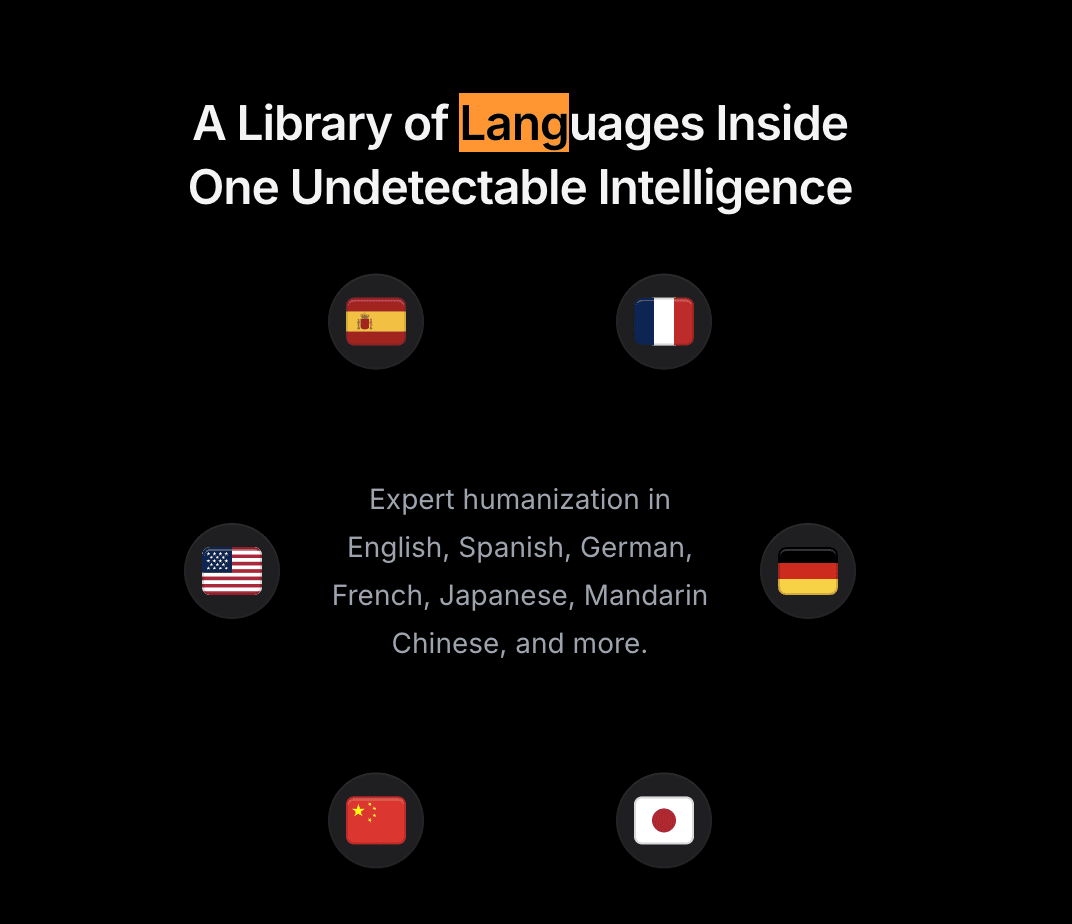
6. Humanized Speed Mode — Best for Last-Minute Fixes
If you need quick humanization without losing clarity, the Fast Mode adds:
• spontaneous sentence breaks
• human pacing
• slight stylistic imperfections
This gives the text a “written by a real person under normal conditions” vibe.
StealthGPT Pricing

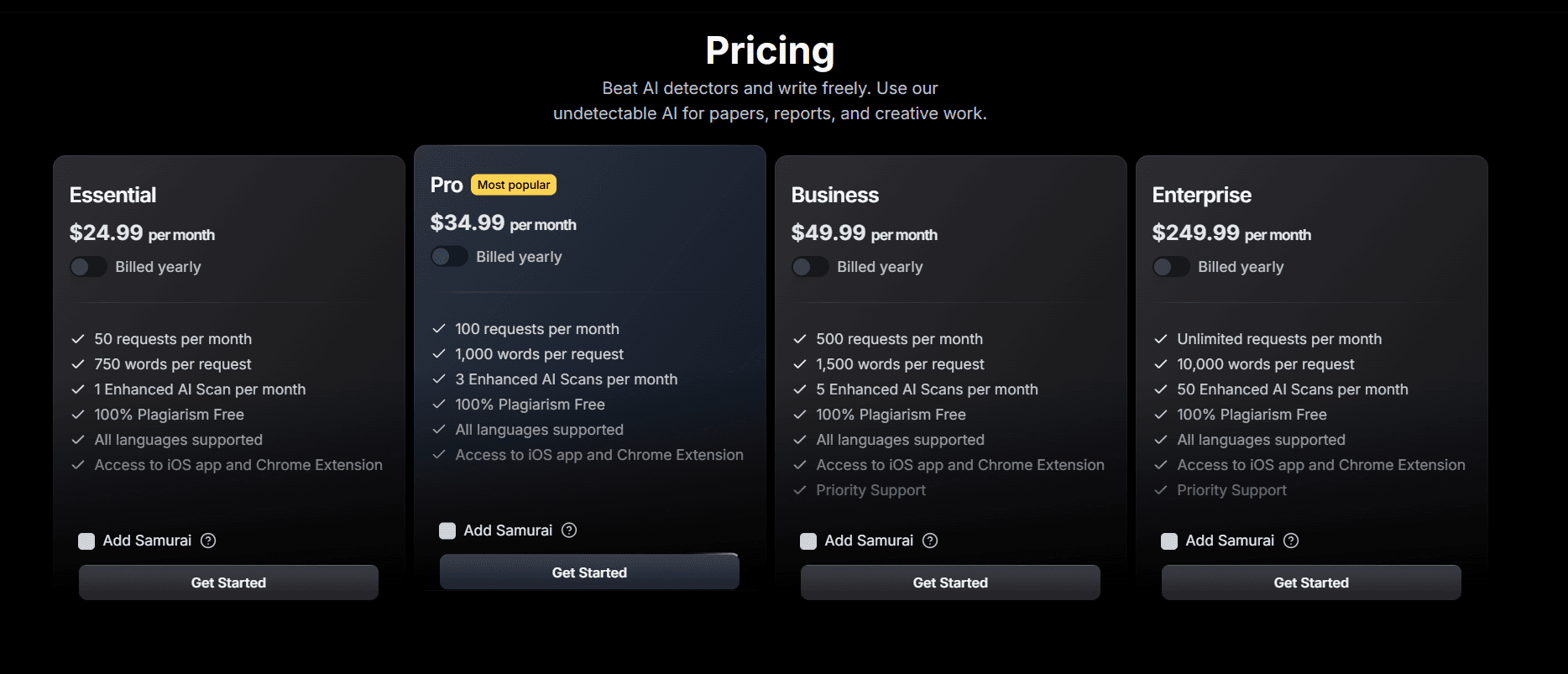
5. HIX Humanizer — Best New Alternative for Turnitin-Safe AI Text
HIX Humanizer (HIX Bypass) is one of the newest tools built specifically to take stiff, predictable AI writing and convert it into natural, original, human-like text. What makes it stand out is how aggressively it targets AI writing patterns that Turnitin often flags — unnatural pacing, repetitive phrasing, and overly formal structure.
HIX focuses on emotional variation, readability fixes, and meaning-preserving rewrites, making it a strong choice for users looking for how to make Turnitin not detect ChatGPT without distorting their original ideas.
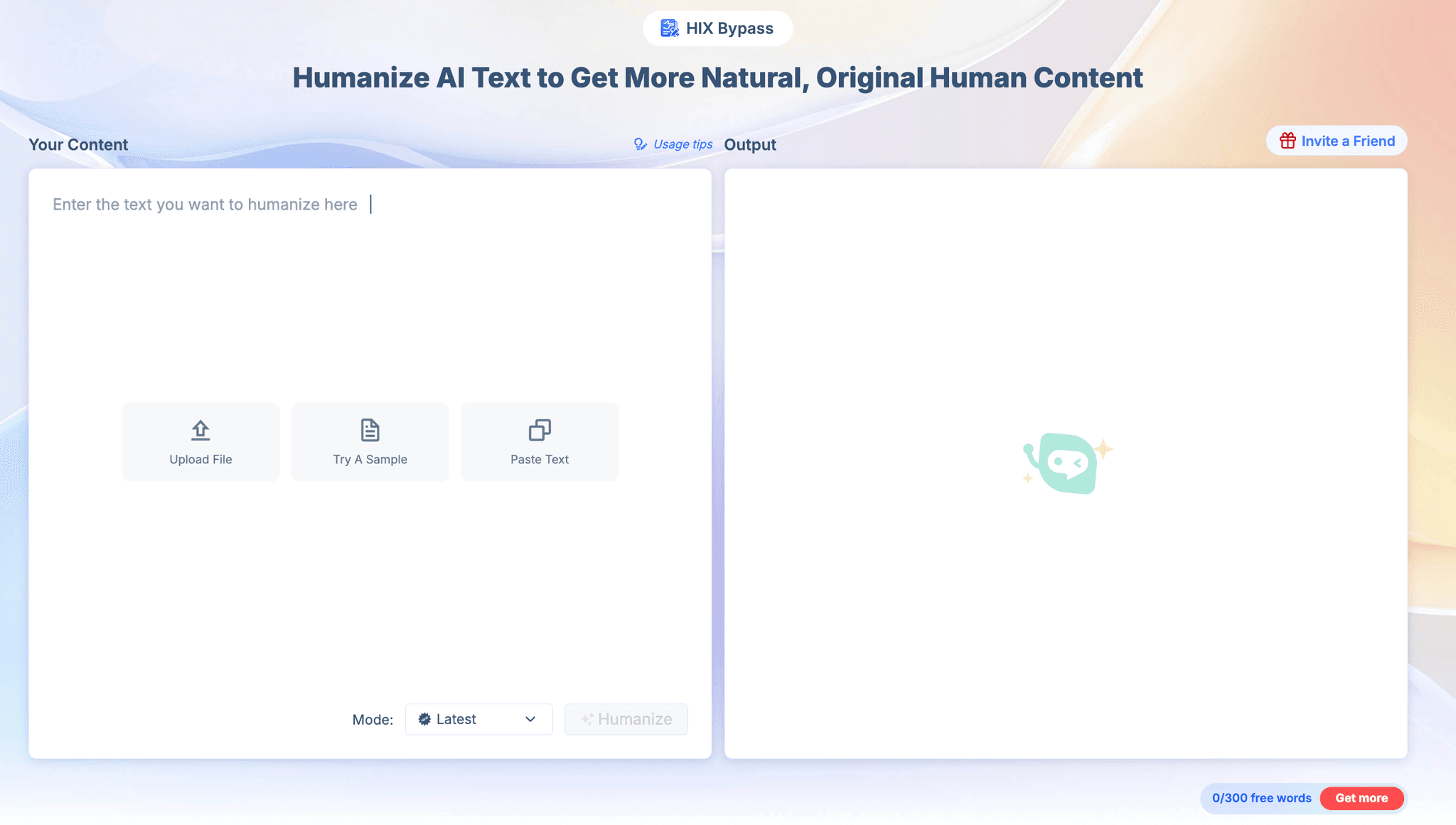
Key HIX Humanizer Features That Help Reduce Turnitin AI Detection
1. Replaces “AI-Tell” Sentence Patterns
HIX identifies common ChatGPT-style patterns such as:
• symmetrical sentence structure
• predictable paragraph flow
• repeated transitional words
• overly formal phrasing
Turnitin flags these patterns quickly. HIX rewrites them using more organic syntax that mimics real human writing.

2. Improves Readability in a Human Way
Turnitin doesn’t just detect AI — it detects AI-like behavior.
HIX fixes:
• repetitive rhythm
• awkward transitions
• lack of emotional variance
• grammatically perfect but unnatural flow
This gives your writing the imperfections, variation, and human pacing Turnitin expects from a real student.
3. Adds Natural Emotion & Human Tone
ChatGPT often sounds:
• flat
• neutral
• overly structured
HIX adds mild emotional nuance — subtle markers of human expression. This doesn't mean adding dramatic tone; it means:
• natural warmth
• slight emphasis
• relatable phrasing
Exactly the kind of tone that Turnitin recognizes as genuinely human.
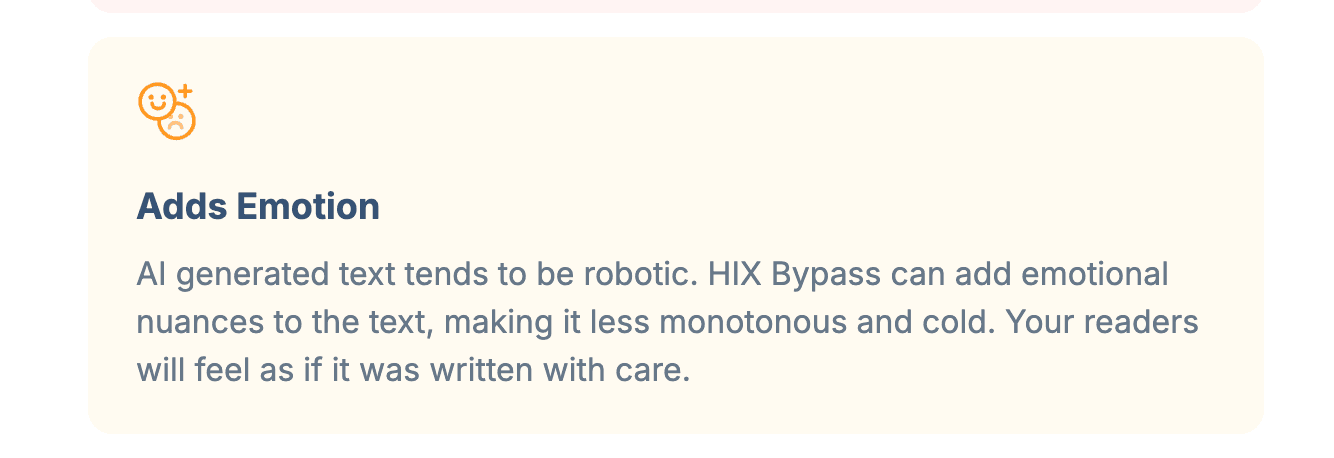
4. Retains Your Original Meaning
A major Turnitin risk is when a humanizer rewrites too aggressively and damages:
• coherence
• argument logic
• factual meaning
HIX preserves meaning while revising structure and style, giving you human-sounding text that still reflects your original content.
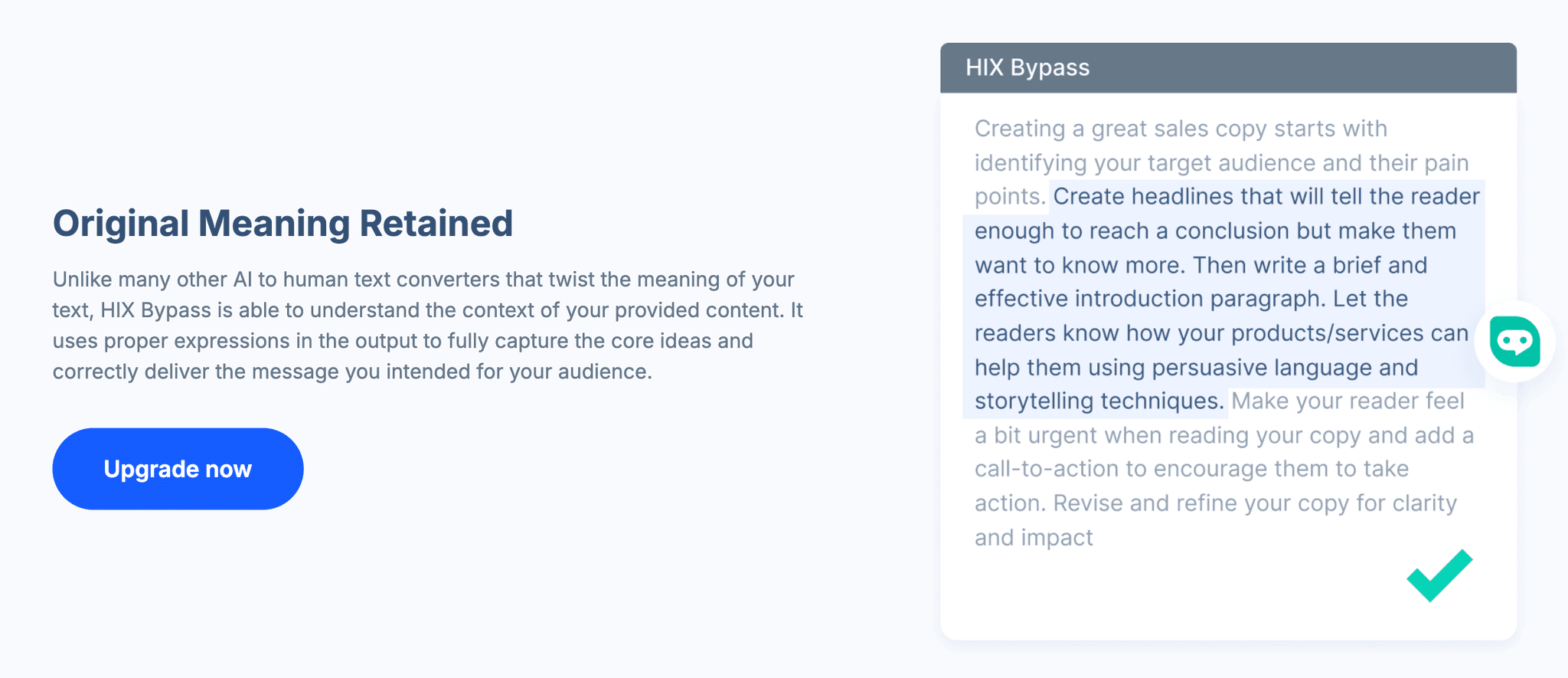
5. Plagiarism-Free, Original Output
Turnitin checks:
- AI probability, and
- plagiarism overlap.
HIX rewrites text with low to zero plagiarism, reducing both risks at once. This is especially helpful if your AI draft accidentally mirrors common phrasing patterns.

Pricing

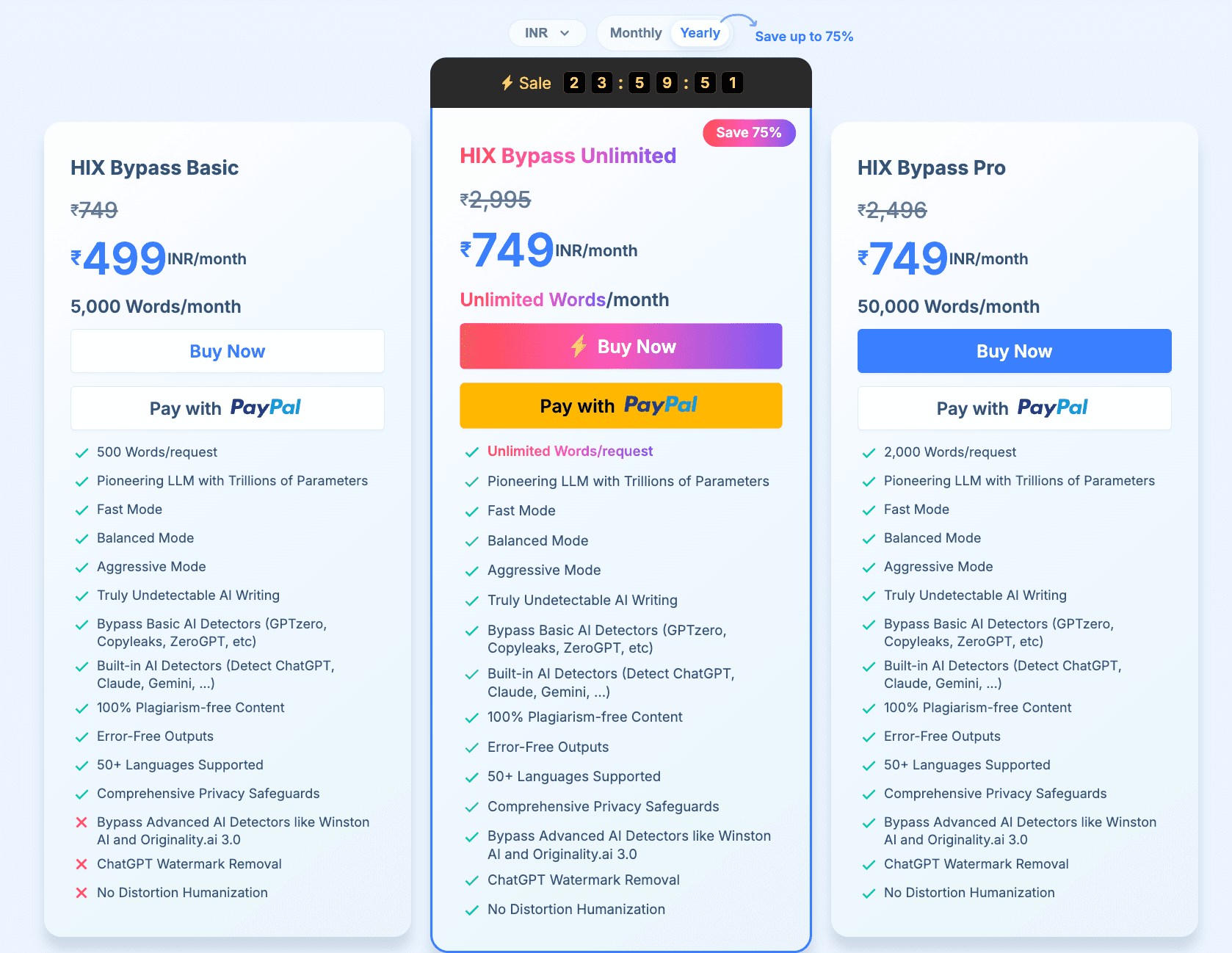
Final Thoughts
In 2026, you shouldn’t be wondering how to make Turnitin not detect ChatGPT by hiding your writing — the right approach is to humanize your writing so it genuinely sounds like you.
AISEO delivers the strongest humanization balance — natural tone, emotional variation, and deep structural rewriting.
- Humanize AI offers smooth readability and tailored complexity levels.
- QuillBot helps with clarity and multilingual work.
- Undetectable AI and StealthGPT offer advanced structural changes for Turnitin-safe writing.
These tools don’t help anyone cheat — they help restore personality, tone, rhythm, and authenticity to writing that starts with AI. Your writing should sound like you — real, thoughtful, and human.
Frequently Asked Questions About Making ChatGPT Text Pass Turnitin
1. Can Turnitin detect ChatGPT?
Yes. Turnitin has a dedicated AI writing detection system designed to identify text produced by models like ChatGPT. It doesn’t look for specific phrases—it analyzes sentence structure, token patterns, probability flows, coherence levels, and stylistic fingerprints that differ from authentic human writing.
Turnitin doesn’t “know” you used ChatGPT; instead, it recognizes patterns that humans almost never produce naturally, such as:
• overly consistent grammar
• uniform sentence length
• predictable reasoning structure
• lack of emotional variation
• mechanical pacing
This means raw AI writing is almost always detectable unless it is significantly humanized.
2. How does Turnitin detect ChatGPT text?
Turnitin uses a multi-layered AI-detection framework. It analyzes:
• Burstiness: Humans mix long and short sentences; AI stays too consistent.
• Perplexity: AI uses highly probable phrasing; humans use unpredictable language.
• Redundancy: AI repeats structures, transitional words, and patterns.
• Rhythm & flow: AI writes with mathematical neatness; humans vary tone and pace.
• Semantic uniformity: AI paragraphs follow similar patterns in logic and structure.
If your text has these traits, Turnitin labels it with a high AI score.
3. Does paraphrasing ChatGPT text help it pass Turnitin?
Basic paraphrasing is not enough.
Turnitin easily detects:
• synonym swaps
• sentence rearranging
• surface-level rewrites
• simple paraphrasing tools
These still keep the deeper patterns—the fingerprint—that Turnitin flags.
To avoid detection, the rewrite must change:
• rhythm
• pacing
• emotional variation
• sentence diversity
• word predictability
• tone and natural imperfections
This is why AI humanizers (like AISEO, Humanize AI, QuillBot’s Humanizer, HIX Bypass, or StealthGPT) work better than normal paraphrasers.
4. What’s the safest method to make ChatGPT text undetectable to Turnitin?
The most reliable workflow is:
Step 1: Generate your draft using ChatGPT.
Step 2: Run it through a dedicated AI Humanizer tool (AISEO, Humanize AI, HIX, QuillBot, StealthGPT).
Step 3: Review and lightly edit to add personal voice.
Step 4: Check Human Score or readability breakdown (if available).
Step 5: Use a plagiarism checker to confirm originality.
This approach rewrites the underlying structure—not just the words—making the text sound genuinely human.
5. What makes AISEO or Humanize AI more effective for Turnitin than normal rewriters?
Turnitin detection goes much deeper than vocabulary, so only tools that modify structural semantics can help.
Advanced humanizers adjust:
• emotional phrasing
• sentence variety
• natural linguistic imperfections
• human-like unpredictability
• pacing, rhythm, and tone
• contextual nuance
These are the exact elements Turnitin expects from real human writing.
Tools like AISEO include features built specifically for Turnitin-safe rewriting, such as:
• Human Score Analyzer
• Readability Level Selection
• Purpose Setting
• History Tracking for rewrites
• Fact-checking to remove AI-style hallucinations
This produces writing that feels human from both a stylistic and cognitive perspective.
6. Does adding personal information or opinion help reduce AI detection?
Yes. Adding genuine human elements dramatically reduces detection risk.
Turnitin tends to trust:
• personal experiences
• emotional reactions
• subjective reflection
• specific examples
• narrative interruptions
• natural inconsistencies
AI text is too objective and too smooth.
Even a few lines of real personal voice can break the AI pattern.
7. Can Turnitin detect text if I copy from a humanizer tool without editing?
Turnitin may still detect patterns if the humanizer output:
• sounds too perfect
• lacks personal elements
• uses overly consistent tone
• is too polished or too formal
To minimize risk, always:
• add a few lines in your natural voice
• break overly long perfect sentences
• add personal examples or anecdotes
• adjust tone to match your writing skill level
A hybrid approach—AI humanizer + personal editing—is the safest method.
8. Is using ChatGPT and humanizers considered cheating?
It depends on your institution.
Many schools allow:
• using AI for brainstorming
• rewriting your own ideas
• improving clarity and grammar
• correcting structure
But they prohibit:
• submitting fully AI-written work as your own
• deception intended to bypass academic integrity rules
If you're unsure, always check your school’s AI policy.
9. Does Turnitin compare your work to ChatGPT’s database?
No — Turnitin does not have access to ChatGPT conversations or OpenAI’s private model outputs.
Turnitin detects AI by analyzing writing style, not by comparing text against a ChatGPT database.
Your content is not matched to any AI source—you are flagged because of patterns, not because your text is “found” somewhere.
10. Will adding grammar mistakes help bypass Turnitin?
Surprisingly, small imperfections can help, but only if they’re natural.
Humans make:
• uneven pacing
• inconsistent transitions
• small stylistic quirks
• unique lexical choices
Artificially adding mistakes may look suspicious.
Instead, let a humanizer introduce natural imperfections, then lightly adjust to match your typical writing style.
11. Do plagiarism checkers matter when avoiding Turnitin AI detection?
Yes. A high plagiarism score can raise suspicion even if your AI score is low.
ChatGPT sometimes resembles common online phrasing, so always check for:
• unintentional plagiarism
• repeated academic phrasing
• cliché explanations
• paraphrased textbook material
Humanizer tools like AISEO and HIX tend to produce plagiarism-free results, which helps avoid secondary flags.
12. Do multiple drafts lower Turnitin AI detection?
Yes. Rewriting in several stages—first AI draft, then humanizer, then personal editing—creates natural text evolution, which is a strong human indicator.
Turnitin expects human writing to develop through:
• revision
• refinement
• slight structural shifts
One-step rewrites can still look too “machine-perfect.”
13. Does changing the tone help avoid AI detection?
Absolutely.
Raw AI text is usually:
• professional
• formal
• balanced
• neutral
• evenly paced
Humans write with emotion, spontaneity, and irregular tone.
Switch to tones that Turnitin finds more human:
• conversational
• reflective
• mildly emotional
• slightly imperfect academic tone
This significantly reduces AI probability.
14. What mistakes increase the risk of Turnitin detecting AI text?
Avoid these high-risk behaviors:
• Copying ChatGPT responses word-for-word
• Using simple paraphrasers
• Rewriting only the first paragraph
• Leaving uniform punctuation
• Keeping overly clean grammar
• Submitting AI text with zero personal edits
• Using identical sentence structures in every paragraph
These behaviors practically guarantee AI detection.
15. What’s the safest, most reliable workflow to make ChatGPT text pass Turnitin?
Here is the gold-standard process you can include in your blog:
✔ Step 1 — Generate a rough draft using ChatGPT
Keep it unpolished. The draft is only for structure.
✔ Step 2 — Humanize the text
Use tools specifically designed for Turnitin-safe rewriting: AISEO, Humanize AI, QuillBot Humanizer, HIX Bypass, StealthGPT.
✔ Step 3 — Read through and personalize
Add:
• 1–2 personal examples
• emotional reactions
• a few natural tone shifts
• small stylistic quirks
✔ Step 4 — Adjust readability level
Make sure the writing matches your natural skill level. Turnitin flags essays that sound “too professional” for typical student writing.
✔ Step 5 — Run a plagiarism check
Even humanized text can accidentally resemble public sources.
✔ Step 6 — Submit with confidence
Your essay now has:
• natural human pacing
• structural variability
• personal tone
• low plagiarism
• low AI probability
This combination is the safest approach to avoiding Turnitin detection.

About Dilyar Buzan
Founder & CEO at AISEO
Artificial Intelligence - University of Amsterdam
LLM engineer
